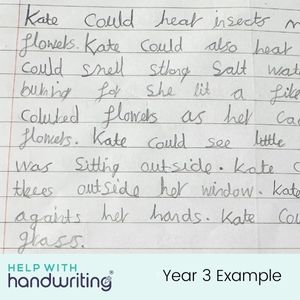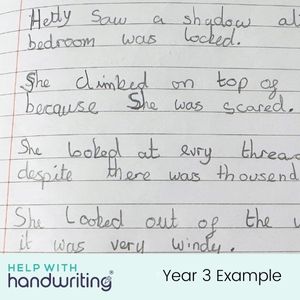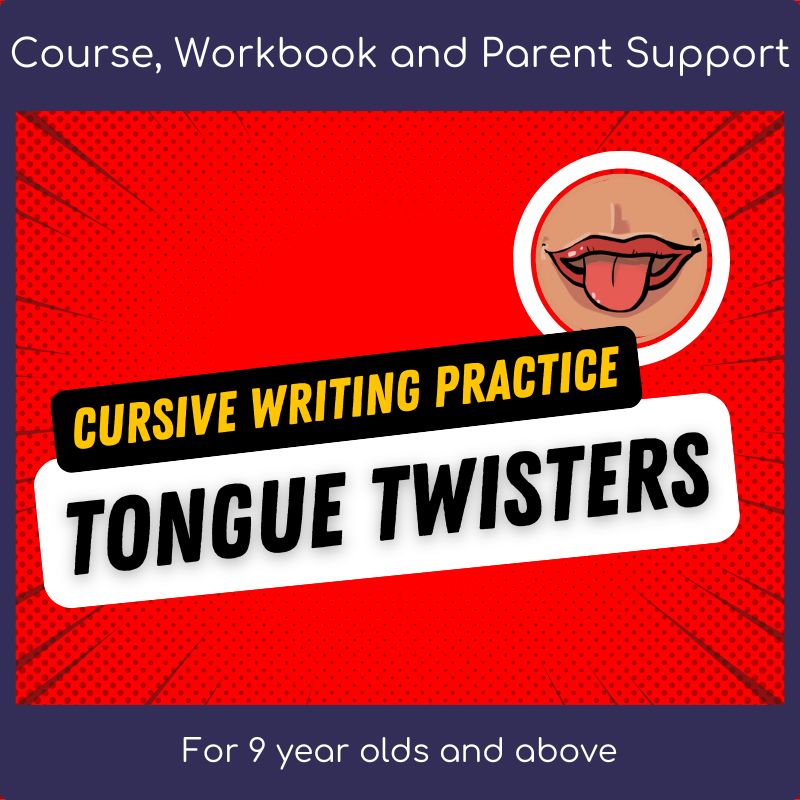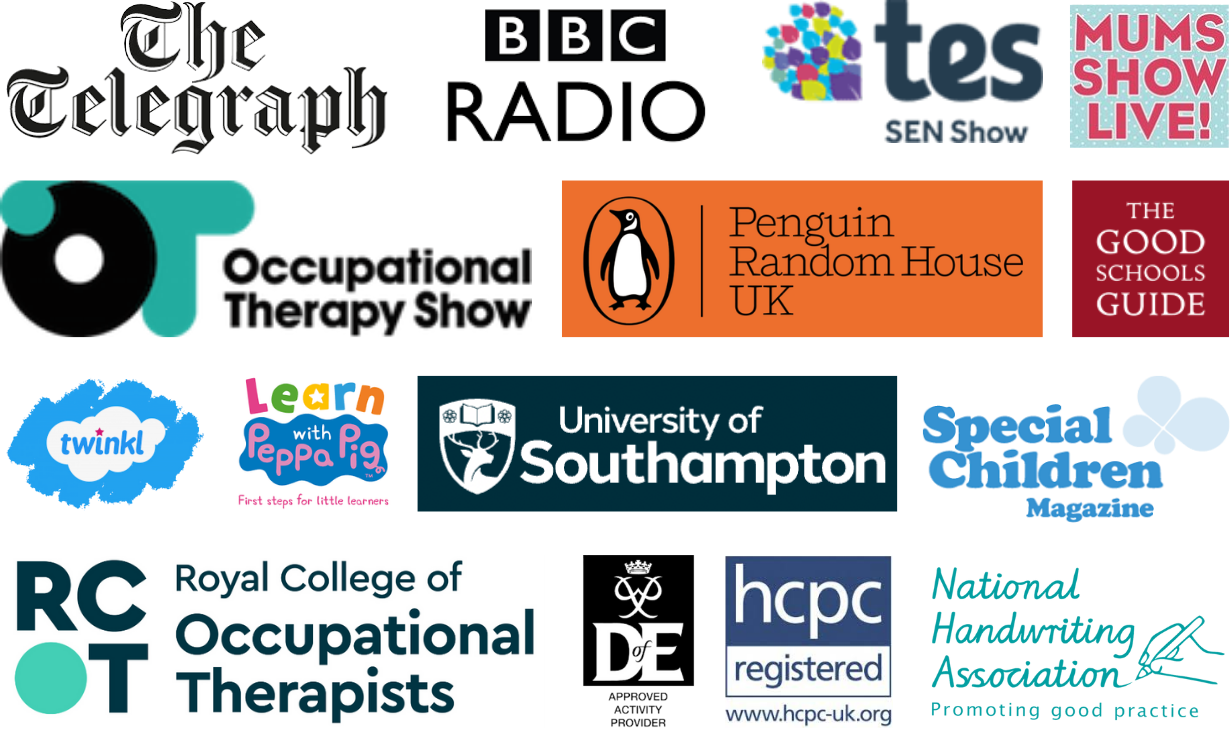Handwriting Practice 7 - 8 Years

Age 6
Forms letters with accuracy but struggles with reversals
Age 7
Forming letters accurately. Inconsistency with size and shape


Age 8
All formations clear with even word space gaps
Age 9
Writing is getting more legible

What a teacher is expecting to see


What to expect at this age in more detail
By the age of seven, your child will be forming letters with accuracy. There may be some inconsistency with sizing and shape. Their legibility can be a little irregular. They’re starting to understand how to space words. They’ll be able to write short sentences and passages. And be able to copy from the board with accuracy.
By the age of eight, your child will be able to write letters clearly and have even word space gaps. They should be able to keep their letter size and shape consistent. It should be easy for them to write upper and lowercase letters. At this stage, they’re learning to write faster. They must do this while keeping it readable.
What support your child might get for handwriting at school?
In school, your child will have less and less time practising how to write. This will be between 30 minutes to 1 hour of practice a week.
Around Year 3, your child’s school may also be talking about pen licences. Pen licences are a real Marmite topic. It can motivate some, but usually, only for those who find handwriting easy. For others, aiming for a “licence” shows them how big their writing problems are. There is no need for a licence for someone to write in a pen. We think it is a silly tool that should be abandoned.
Why handwriting practice matters
If more practice time is needed, teachers may say there is a fine motor skills problem. Or suggest your child join the school’s handwriting group. Not all kids who struggle to write have slow fine motor skills. And many dislike the idea of leaving their class for more handwriting.
They will benefit from extra practice. This helps them embed writing into muscle memory. Sometimes they are too keen to strive for their independence and struggle to accept handwriting advice from their parents.
Expand Your Handwriting Know-how: 4 Must-Read Guides for Parents
Writing made fun: 3 Ways to Boost Your Child's Skills
Engaging, Age-Appropriate Solutions Await


Playful Practice: 3 Fun Handwriting Activities for You to Try at Home
Here are three handwriting practices for 7 to 8 year olds activity ideas. These are all things that can be done at home. This is what we would do here at Help with Handwriting to make writing practice fun.
Don’t write, complete puzzles instead
Word searches help develop pen control skills. Crosswords help with letter sizing. Maze puzzles help develop the skills needed for word space gaps.
Play 2 Truths and 1 Lie
Children often like the permission to lie. Ask your child to write three sentences and you do the same. Guess the lie. Afterward, compare your handwriting. Explain how yours, hopefully, all have the same letter sizes.
Words within words
Take a long word or name, for example, Professor Albus Dumbledore. Try and find as many words as possible from the letters in that word or name. Write these down.

Be the first to know: Weekly expert tips and insider insights


Join our Thursday newsletter for:
Expert handwriting tips
Behind-the-scenes insights
Latest handwriting research
New blog post alerts
Exclusive discounts on our courses
Please tick which age group is most relevant.
Thank you!
You have successfully signed up and a newsletter will be on its way to you shortly.
We promise we will respect your details and we will not spam you with rubbish content.






